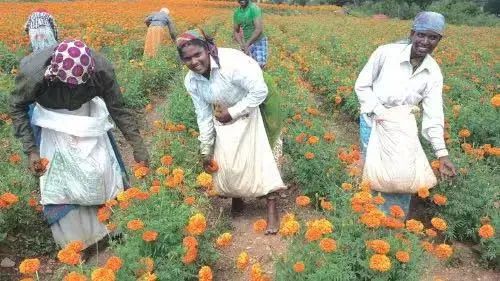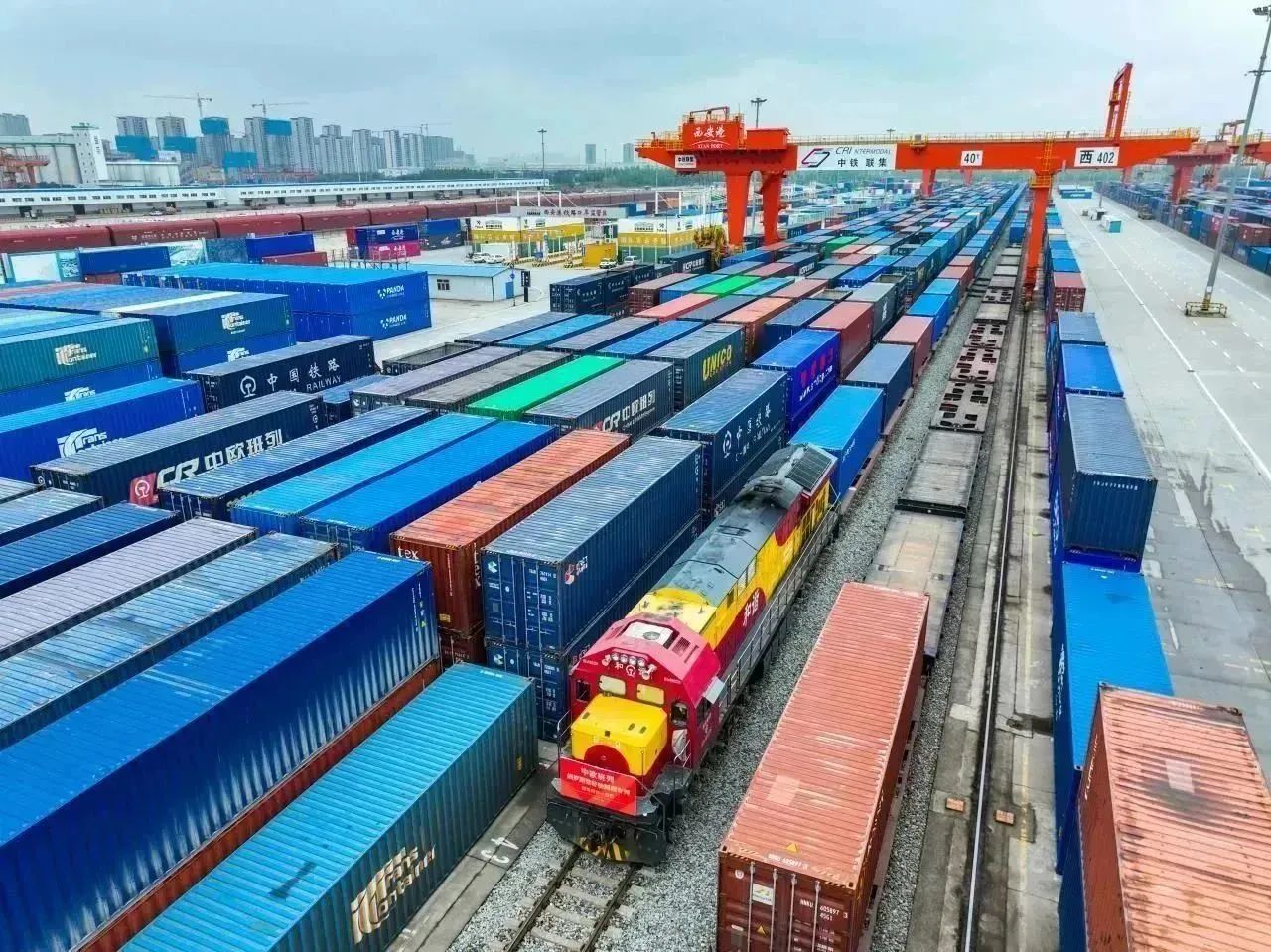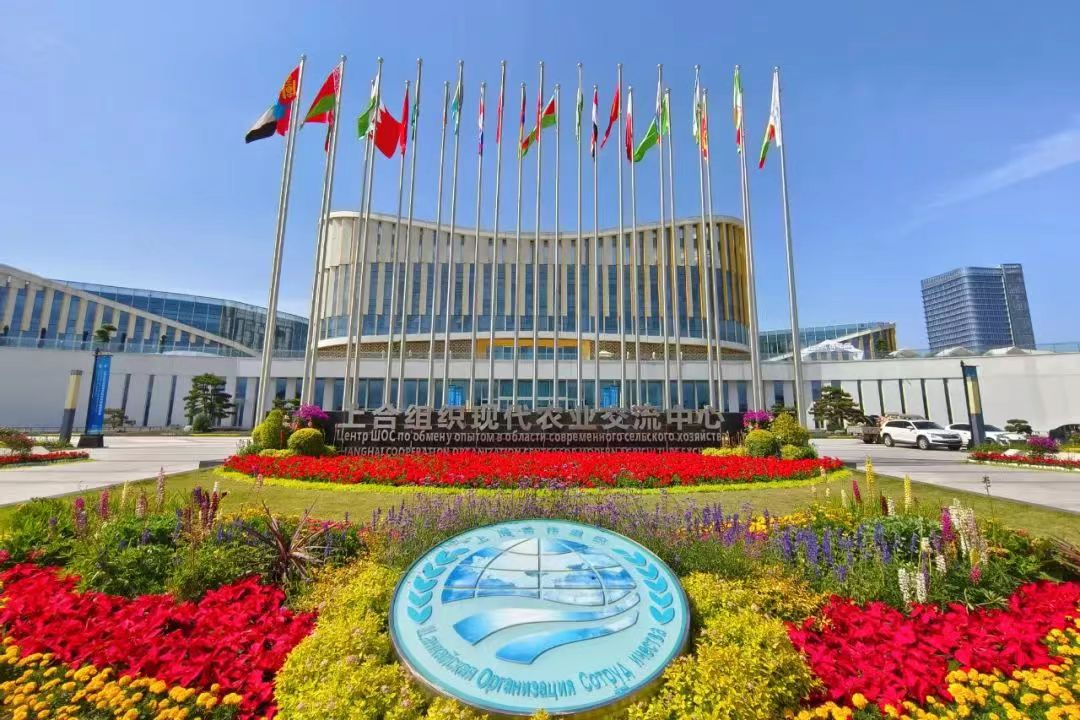


In 2023, the Belt and Road Initiative (BRI) commemorates its 10th anniversary, marking a remarkable journey from inception to fruition. Over the past decade, the BRI has become an internationally celebrated platform for open, inclusive, mutually beneficial, and win-win cooperation, and is widely welcomed as a global public good by the international community.

Historically, crops such as sesame, pomegranate, grapes, and alfalfa from the Western Regions (or "Xi Yu", a Chinese historical term specifying other regions to the west of China) found their way to China, while Chinese production technologies and crafts such as well digging and papermaking, as well as crafts like cloth-weaving and sericulture diffused into Central Asia. Agricultural exchanges and trade along the Silk Road have existed since ancient times. As this rich historical legacy continues to inspire agricultural cooperation, which remains a common aspiration of Belt and Road partner countries in modern times. Over the past ten years, agricultural cooperation mechanisms between China and Belt and Road partner countries have been continuously improved, with the scope and scale of cooperation expanding. Currently, China has signed agricultural and fishery cooperation agreements with over 80 Belt and Road partner countries, and initiated more than 650 agricultural investment projects. The BRI has facilitated complementary advantages and mutual development between China and other partner countries, making significant contributions to agricultural development and the building of a community with a shared future for mankind.
Steady growth in agricultural outbound investment with cooperation parks as pivotal platforms
In May 2017, the former Ministry of Agriculture, together with the National Development and Reform Commission and other ministries of China, jointly issued the "Vision and Action for Jointly Promoting Agricultural Cooperation under the Belt and Road Initiative," which explicitly called for increasing investment in agricultural infrastructure and the entire industry chain including production, processing, storage, transportation, circulation, etc., and pushing forward the landing of key projects. Within this framework, agricultural cooperation stands out as a key bond for Belt and Road partners to jointly build a community with a shared future.
In recent years, China's agricultural investment in Belt and Road partner countries has shown a consistent upward trend. As of the end of 2021, Chinese enterprises had established 868 agricultural companies across 90 countries within the BRI. The total investment stock amounted to $14 billion, constituting 52% of the overall foreign agricultural investment stock. These investments span diverse sectors, including agriculture, forestry, animal husbandry, and fisheries, involving production, processing, warehousing, logistics,scientific research, and branding.
"Since the launch of the first factory in 2013, New Hope Group has successively invested in and established six feed companies and one poultry breeding company in Egypt, with a total investment of 475 million yuan. The annual sales revenue has reached 2 billion yuan, and even greater breakthroughs are expected this year," Shao Wen, general manager of New Hope Liuhe Co., Ltd. (Egypt) introduced. The company has directly employed over 1,000 local employees and reached cooperation agreements with well-known local universities such as Cairo University, Alexandria University, and Kafrelsheikh University to promote the development of the Egyptian feed industry through scientific research cooperation.
In the Philippines, the proactive efforts of Yuan Longping High-Tech Agriculture Co., Ltd. ("Longping High-Tech") have led to remarkable achievements in hybrid rice cultivation. With their vigorous promotion, the planting area of hybrid rice now spans over one million hectares, constituting nearly one-fourth of the total rice planting area in the country. The yield of hybrid rice has surged to an impressive 15 tons per hectare, tripling that of traditional rice varieties. As a result, rice produced from Chinese hybrid rice has become readily available in Philippine agricultural markets and major supermarkets. In Zambia, Chen Guang Biotechnology Group Co., Ltd. (CCGB)'s thousands of acres of paprika and marigold planting base and marigold processing factory have provided over 7,000 jobs for local people. In Sudan, China-invested enterprises have improved the planting and processing levels of cotton by introducing and improving cotton varieties, subsidizing farmers for planting, providing technical guidance to farmers, and smoothing sales channels, effectively helping local farmers to become prosperous. Similarly, COFCO Corporation (COFCO) has actively responded to the BRI by investing in grain storage and logistics facilities in the Black Sea and Central Asia, extending the dairy industry chain in Indonesia and New Zealand, and promoting rice trade in Southeast Asia.

Furthermore, China has proactively established overseas agricultural cooperation parks, serving as catalysts for domestic enterprises to expand globally and thrive in cohesive clusters. Embracing the ethos of shared development, China has led enterprises leverage regional resource advantages and industrial characteristics of host countries to foster integration across primary, secondary, and tertiary industries. Notably, the Ministry of Agriculture and Rural Affairs of China has designated the first batch of overseas agricultural cooperation demonstration zones, including those in Tajikistan. These parks have garnered significant interest, attracting a plethora of both domestic and foreign agricultural enterprises. Over time, they have begun to exhibit tangible industrial agglomeration effects, emerging as pivotal platforms for China's agricultural outbound investment in Belt and Road partner countries.
Rapid development of agricultural product trade and significantly improved connectivity
Belt and Road partner countries have vast territories and abundant agricultural resources, providing a solid hardware foundation for the development of agricultural product trade. According to statistics, in 2022, China's agricultural product trade with Belt and Road partner countries reached $139.4 billion, with an average annual growth rate of 9.9%. Fruits such as the luscious durian, the succulent emerald honey pomelo, and the crisp and sweet mangosteen, once considered expensive imported fruits, have now made their way onto ordinary people's dining tables. With the deepening of China-ASEAN economic and trade cooperation, fruit trade continues to grow. In 2022, China's imports of dried and fresh fruits and nuts amounted to $14.2 billion, with Thailand, Vietnam, and the Philippines accounting for over 50%. At the port of the Youyi Pass, or Friendship Pass in Pingxiang, Guangxi Zhuang autonomous region, the largest land port for fruit import and export along the China-Vietnam border, a steady stream of vehicles loaded with imported fruits flows incessantly.
Xi'an, the historic origin of the ancient Silk Road, also serves as a pivotal hub and focal point in the China-Europe freight train development strategy. In November 2013, Xi'an launched the first international freight train directly to Almaty, Kazakhstan. By the end of April 2023, the "Chang'an" China-Europe freight train has completed an impressive 4,250 journeys into Central Asia, facilitating the seamless transportation of Chinese textiles, daily essentials, and various goods to the region. In return, it brings back wheat, vegetable oils, green beans, bran, and other agricultural products to Xi'an, serving as a distribution hub across the nation.

Today, the journey from the China-Europe Railway Express Urumqi Assembly Center, tracing the ancient Silk Road westward, takes merely two days to reach Kazakhstan, eight days to reach Russia, and sixteen days to reach the Netherlands. Over the past decade, infrastructure improvements and enhanced connectivity, fostered by cooperation under the BRI, have propelled trade development among nations, transforming the "Steel Camel Caravans" into the "golden channels" of trade among participating countries in the new era.
In recent years, cross-border e-commerce has gradually developed into a new driver for the growth of agricultural trade under the BRI. According to Liu Yizhuo, a researcher at the Chinese Academy of International Trade and Economic Cooperation (CAITEC) of the Ministry of Commerce, China has established bilateral e-commerce cooperation mechanisms with 29 Belt and Road partner countries as of 2022, enriching e-commerce cooperation and creating new opportunities for agricultural trade.
In 2022, the trade volume of agricultural products through cross-border e-commerce between China and Belt and Road partner countries reached $2.29 billion, marking a significant year-on-year increase of 35.3%. Notably, exports surged by 76% to $740 million, while imports increased by 16% to $1.55 billion. Agricultural products from over ten partner countries, including Chilean wine, Vietnamese purple cashews, Russian vodka, and Colombian coffee, continue to penetrate the Chinese consumer market via e-commerce platforms, fostering agricultural trade growth in relevant nations.
Closer exchanges of agricultural technology promote capacity building and people-to-people bonds
Over the past decade, China has continually bolstered agricultural technology cooperation with Belt and Road partner countries, providing invaluable assistance to countries in need, driving local agricultural production, and boosting farmers' incomes with Chinese wisdom, and achieving complementary advantages and common development between China and Belt and Road partners.
Hybrid rice, a hallmark of China's agricultural cooperation under the BRI, has proliferated from a single seed of hope to bountiful harvests. Through hybrid rice, the Shanghai Cooperation Organization Agricultural Technology Exchange Training Demonstration Base in Yangling, Xi'an, has forged cooperative ties with over 60 countries in modern agriculture, demonstrating and promoting more than 110 excellent varieties and high-efficiency cultivation techniques, with a radiation area of more than 30 million acres. Hybrid rice has been widely spread in Belt and Road partner countries, generally increasing rice production by more than 20% compared to local varieties. The Chinese solution has played a pivotal role in increasing grain production and agricultural development in various countries.

Since the 18th National Congress of the Communist Party of China, the Chinese Academy of Agricultural Sciences (CAAS) has inked strategic cooperation agreements with nearly 30 research institutions (universities) in partner countries. Joint laboratories with countries like Romania, Kazakhstan, and Uruguay have been established, hosting hundreds of agricultural technology training sessions for officials and technicians from participating countries. Over 4,300 agricultural science and technology personnel from developing nations have benefited from these actions.
In July 2023, the inaugural International Symposium on China-Central Asia Agricultural Science and Technology Innovation and Cooperation convened in Changji, Xinjiang Uygur autonomous region, China. More than 300 experts and representatives from 108 scientific research units, universities, and enterprises from China, Central Asia, and five Belt and Road partner countries in Central Asia gathered to address shared concerns such as saline-alkali land governance, water-saving irrigation, and pest control. The symposium established the CAAS Central Asia Agricultural Research Center, heralding a new era in agricultural science and technology cooperation between China and Central Asia.
In addition to the strong alliance of research institutes, a large number of foreign aid experts are playing a pivotal role in disseminating technology to Belt and Road partners, nurturing the bonds of friendship. The China-aided senior agricultural expert group for Burundi leveraged China's poverty alleviation experience to establish a "Rice Technology Poverty Reduction Demonstration Village" in Burundi, driving 134 households in the village to plant hybrid rice on 237 hectares, with an average quarterly increase in income of $985 per household, lifting all villagers in the village out of poverty.
President Evariste Ndayishimiye of Burundi has personally inspected Burundian agricultural projects supported by aid from China on three separate occasions. Each visit underscored his deep appreciation for the assistance provided by the Chinese government. He openly expressed gratitude for the dedicated efforts of Chinese aid experts, who have tirelessly disseminated advanced technology and expertise, their unwavering commitment to training agricultural talent, and their tangible contributions to boosting food production in Burundi.
Over the past decade, in the spirit of the Silk Road, agricultural cooperation under the BRI has yielded substantial results. Through talent training, technical assistance, poverty reduction demonstrations, and the implementation of practical livelihood projects, living standards in participating countries have markedly improved, transforming the BRI from "sketching the outline" to "filling in the details". Looking ahead, guided by the principles of "planning together, building together, and benefiting together," agricultural cooperation under the BRI is poised to achieve even greater success, ushering participating nations into a future brimming with prosperity and abundance.
(图片来源于网络)

服务邮箱:agricn@126.com 违法和不良信息举报电话:010-84395205
京公网安备 11010502040354号 互联网新闻信息服务许可证10120170078 京ICP证05068373号
农民日报社主办,中国农网版权所有,未经书面授权,禁止使用
Copyright©2019-2025 by farmer.com.cn. All Rights Reserved